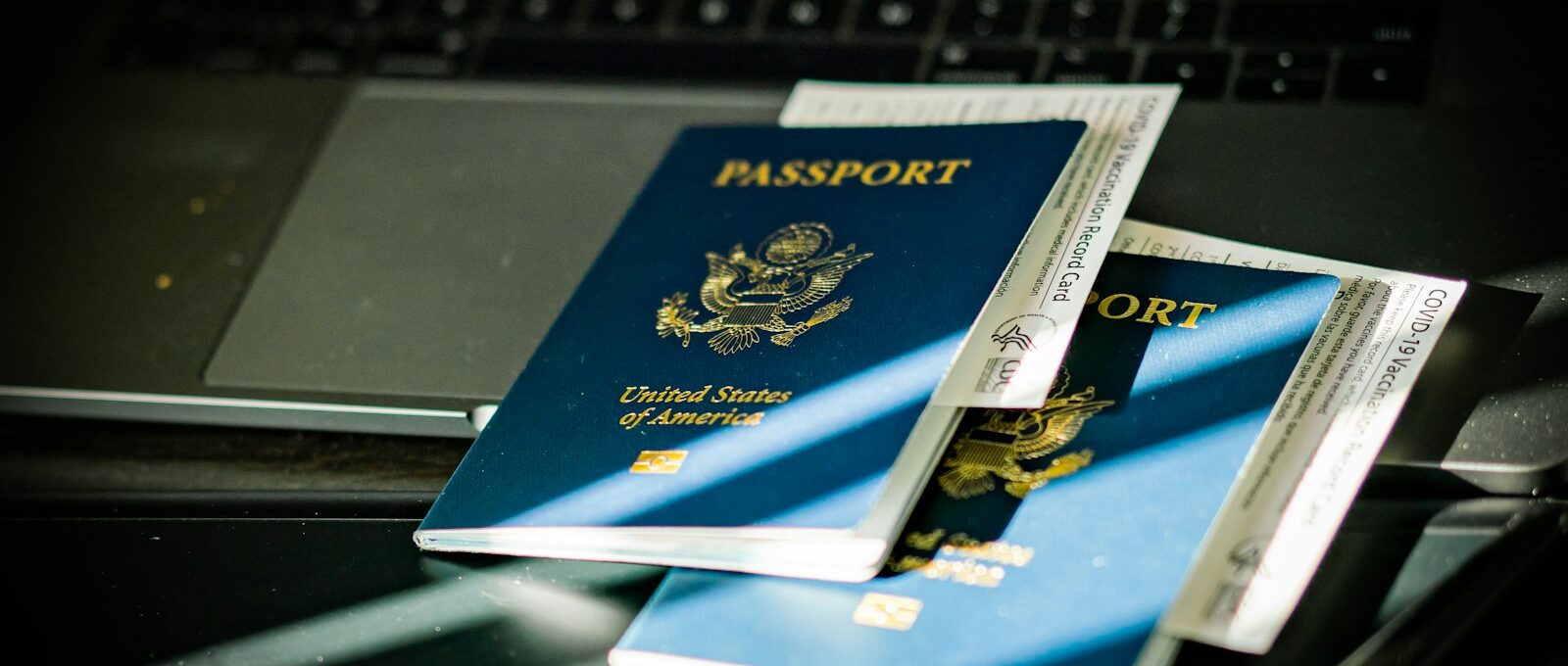Thinking about sponsoring an immigrant but not sure where to start? You’re not alone. The process can seem daunting, but with the right guidance, you’ll be on your way to helping someone start a new life. Whether you’re looking to sponsor an immigrant friend or a family member, understanding the ins and outs is crucial.
Knowing how to sponsor someone involves navigating complex immigration laws an

Sponsor an Immigrant: Steps & Tips Explained
Thinking about sponsoring an immigrant but not sure where to start? You’re not alone. The process can seem daunting, but with the right guidance, you’ll be on your way to helping someone start a new life. Whether you’re looking to sponsor an immigrant friend or a family member, understanding the ins and outs is crucial.
Knowing how to sponsor someone involves navigating complex immigration laws and procedures. But don’t worry, you’re about to get a clear roadmap. From eligibility to the necessary paperwork, this article will walk you through every step, ensuring you’re well-prepared for this generous and life-changing commitment.
What is immigrant sponsorship?
Understanding the Concept
Immigrant sponsorship is a formal commitment to support an immigrant as they adjust to life in their new country. When you choose to sponsor someone, you’re essentially vouching for their ability to contribute to society and affirming that they won’t be a financial burden on the state. Sponsorship often involves pledging financial support, ensuring the immigrant has access to basic needs such as housing, food, and healthcare.
Being a sponsor is more than just signing a piece of paper. It requires a thorough assessment of your financial capability and a deep understanding of the obligations you’re undertaking. Immigration authorities will scrutinize your application to confirm that you meet the set income thresholds and can provide for the immigrant adequately. It’s crucial to recognize the gravity of this pledge; defaulting on your commitments can have serious legal implications.
Types of Immigrant Sponsorship
Immigrant sponsorship can be broadly categorized into family-based and employment-based sponsorship:
- Family-Based Sponsorship: This is the most common route, where you can sponsor close relatives, such as spouses, children, parents, and sometimes siblings, to come and live permanently in the country. Each family relationship has specific requirements and forms that you’ll need to navigate.
- Employment-Based Sponsorship: Businesses can sponsor employees through various work visas. This path requires proving that there’s a genuine need for the immigrant’s skills and that hiring them won’t adversely affect the domestic labor market.
In each case, the sponsor must ensure compliance with the comprehensive criteria set by immigration laws. Family-based sponsors, for instance, must demonstrate an established relationship through legal documentation. Employers, on the other hand, are usually required to go through labor certification processes to validate the necessity of an international hire.
Employing these strategies allows immigrants to establish a legitimate foothold as they embark on their journey to permanent residency or citizenship. It’s important to stay updated on immigration policies, as laws and requirements are subject to frequent changes. Whether you’re an individual or a business, understanding and fulfilling your sponsorship duties is paramount for the successful immigration of your friend or prospective employee.
Eligibility requirements for sponsor
Legal Requirements
If you’re planning to sponsor an immigrant, understanding the legal requirements is crucial. To begin with, you must be a US citizen or a permanent resident. Moreover, you need to be 18 years of age or older and reside in the United States or its territories. Immigration laws state that you must have a domicile in the US, meaning you live there permanently, or you are in the process of establishing one.
Sponsoring an immigrant friend or relative isn’t taken lightly by immigration authorities. You’ll need to establish your relationship with the immigrant, whether they’re a family member or, less commonly, a friend. The latter might require a more in-depth explanation and documentation.
Remember, before commencing the sponsorship process, ensure you haven’t committed serious offenses that might disqualify you. Certain criminal records may render you ineligible according to immigration policies.
Navigating through the maze of legalities can be complex, so it’s wise to consult an immigration attorney or a legal expert if you’re unsure about your standing.
Financial Requirements
When you sponsor an immigrant, the financial responsibility is a substantial consideration. You’ll need to demonstrate the ability to support the immigrant after their arrival to the US. This means showing that your income is at least 125% above the Federal Poverty Guidelines. The government requires this assurance to ensure newcomers don’t become reliant on public welfare systems.
You’ll be required to fill out an Affidavit of Support form, which legally binds you to financially support the immigrant. This obligation typically continues until the immigrant becomes a US citizen or can be credited with 40 quarters of work (usually 10 years).
Let’s break down the income requirements for sponsors of immigrants in different household sizes for better clarity:
| Household Size | 125% of Poverty Guidelines |
|---|---|
| 2 members | $21,775 |
| 3 members | $27,450 |
| 4 members | $33,125 |
| Each additional | Add $5,680 |
Keep in mind that these figures are subject to change, so it’s essential to verify the current guidelines when you’re preparing to sponsor someone.
Having sufficient assets can sometimes offset lower income; however, proving this is part of the diligent paperwork you’ll be required to provide. This may include bank statements, tax returns, and employment verification displaying your financial status.
By meeting both the legal and financial requirements for sponsoring an immigrant, you’re taking a momentous step toward aiding someone in their journey to potentially becoming a valued member of the community. Always stay informed, consult professionals, and keep the immigration process on track for achieving what can be a life-changing event for both you and the immigrant you sponsor.
Selecting and supporting the immigrant
Establishing a Relationship
When you decide to sponsor an immigrant, the first step is establishing a valid relationship. This foundation determines your eligibility as a sponsor and sets the stage for the entire sponsorship process. Whether you’re bringing a family member, a friend, or an employee, documenting your relationship is a non-negotiable requirement. For family-based immigration, this involves proving a biological or marital connection. If you’re sponsoring an employee, you must establish an employer-employee relationship. For those sponsoring a friend, recognizing the legitimacy of the relationship is essential and requires appropriate legal backing.
Assessing the Immigrant’s Needs
Once the relationship is clear, it’s time to assess the immigrant’s needs comprehensively. Consider factors like:
- The immigrant’s basic living needs
- Healthcare requirements
- Educational opportunities
- Employment prospects
These play a critical role in ensuring their smooth transition into U.S. society. By evaluating these areas, you ensure that you’re fully prepared to support the immigrant as they navigate their new environment. Your understanding of these elements also provides insight into the responsibilities you’re committing to as a sponsor.
Providing Financial Support
Financial support is integral to your role as a sponsor. To fulfill your responsibility, you’ll be required to submit an Affidavit of Support form, which legally binds you to support the immigrant. This means you should be ready to support them to the extent that their income remains above the mandated poverty line. Your financial undertaking includes, but is not limited to:
- Housing and shelter
- Food and groceries
- Medical insurance and care expenses
- Educational fees, if applicable
Each of these requirements will be scrutinized during the sponsorship process to confirm that you possess the financial capability to sustain the well-being of the person you’re sponsoring. Keep in mind that this commitment can last for several years, and planning ahead for the financial implications is crucial for a stable sponsorship journey.
Gathering and completing the necessary paperwork
Understanding the Application Process
When you’re ready to sponsor an immigrant, knowing the roadmap of the application process is crucial. Your first move involves identifying the right forms. Immigration forms vary depending on the type of sponsorship – whether it’s for a family member, an employee, or someone else. You also need to acquaint yourself with the latest updates to immigration policies as these can impact timelines and requirements.
You’ll navigate through a myriad of instructions which detail the specifics of filling out each form accurately. Deadlines are critical in the sponsorship application process. Missing one could mean a denial or significant delay. Furthermore, some forms require a fee, so it’s vital to prepare these payments to avoid hiccups in the processing of your application.
Filling Out the Sponsorship Application
Filling out the sponsorship application is a task that demands your utmost attention to detail. Mistakes or omissions at this stage can result in setbacks or refusals. Start by carefully reading through each section of the application to familiarize yourself with what information you’ll need to provide.
Throughout the application, you’ll be asked for personal details about both you, the sponsor, and the immigrant you’re sponsoring. Ensure the information is both accurate and consistent with any other documents you’ll submit. If there’s a change in your circumstances or that of the immigrant while the application is in process, you’re responsible for updating the relevant authorities.
To sign the application, you’ll need to follow the precise instructions provided. Some forms may require a physical signature, while others might allow for a digital one. Ensure you adhere strictly to these requirements to maintain the validity of your application.
Collecting Supporting Documents
Supplying the correct supporting documents alongside your application is as critical as the application itself. Depending on your situation, these documents often include proof of your financial stability, your relationship with the immigrant, and your legal ability to sponsor. You may need to provide:
- Tax returns or pay stubs as evidence of your income
- Legal documents proving your status in the United States
- Proof of relationship to the immigrant, such as marriage or birth certificates
Each document you collect must be current, legible, and unaltered. For documents not in English, certified translations are usually mandatory. Remember that you could be asked to present original documents at interviews, so it’s prudent to have them at your disposal.
Keep track of the document submission timelines. Early preparation allows you to ensure every document meets the stipulated standards and that they reach the right hands at the right time. Accurate, thorough documentation solidifies your application’s foundation and aids in avoiding unnecessary delays within the immigration system.
Submitting the sponsorship application
Understanding the Timeline and Process
When diving into the timeline and process of an immigration sponsorship application, being well-versed with the steps involved is crucial. First, you need to identify the specific visa or residence program under which you’ll sponsor your immigrant friend. Each program has its unique set of rules and processing times. Generally, a visa or adjustment of status application can range from months to even years based on factors like visa category, priority dates, and your country of origin.
Make sure to check the latest processing times reported by the immigration authorities. As a sponsor, you’ll have to deal with different governmental departments—each with their timelines. For instance, the initial approval from USCIS might be just the first step, followed by National Visa Center (NVC) processing. Keep track of any changes in legislation or processing protocols, as they could alter your expected timelines.
Paying the Application Fees
Before you can submit your sponsorship package, there’s a monetary gate to pass: the application fees. These fees vary depending on the type of application and the immigrant’s country of destination. In the US, for example, both you and the immigrant will have some costs to cover.
Do not overlook any fee requirement— missing fees can result in your application being delayed or rejected. You should be ready to pay for the:
- Filing fees for the principal immigrant’s visa petition.
- Additional fees for ancillary forms or biometrics, if applicable.
- Processing fees for the Affidavit of Support.
To stay prepared, regularly check the official immigration website or consult with your attorney for the most current fee schedules.
Submitting the Application Package
Once all documents are in order, fees are paid, and you are confident in the package’s completeness, you’re ready to submit. This step involves sending your sponsorship package to the appropriate immigration office.
As you put together your package, make sure every form is signed and that all supporting documents are attached. Double-check for:
- Birth certificates, marriage certificates, and other proof of relationship.
- Proof of your citizenship or permanent residency.
- Financial records supporting your Affidavit of Support.
Ensure that any non-English documents have certified translations and that everything is organized in a way that simplifies the reviewers’ task. Careful packaging can help speed up the review process, so don’t rush this part. After submission, monitor your application’s status through online systems or by corresponding directly with the immigration office. This proactive approach will enable you to tackle any requests for additional information or corrections promptly, keeping your sponsorship journey on track.
Remember that patience and attention to detail during the application phase can significantly influence the outcome of your sponsorship endeavor.
After submitting the application
Once you’ve navigated through the labyrinth of paperwork and submitted your sponsorship application, your journey isn’t over yet. There are a few more steps down the road. Keeping up-to-date with the application’s progress and being responsive to any additional requests is key.
Waiting for a Response
After your application is in, patience is crucial. Immigration authorities have to process countless applications, and response times vary. Here’s what you should keep in mind:
- Check the estimated processing times for your specific sponsorship application, which can often be found on the immigration authority’s website. Note that these are estimates and your actual wait time may be longer.
- You can typically track your application status online. Make the most of online tools to stay informed.
- Keep your contact information up to date with the immigration office. If they can’t reach you, it could delay the process.
Providing Additional Information if Requested
Sometimes, the immigration office will reach out for more details:
- Respond to any requests for additional information as quickly as possible to avoid delays.
- Double-check that any supplementary information you provide is accurate and consistent with your initial application.
- If documents are requested, ensure they are complete and clearly legible.
Preparing for an Interview
If an interview is necessary, it’s a pivotal point in the sponsorship process.
- Prepare by reviewing the details of your application and the immigrant’s personal history.
- Understand the potential questions that may be asked; these often revolve around the genuineness of your relationship with the immigrant and your financial capability.
- Practice clear and honest communication. Now is the time to demonstrate the legitimacy of the sponsorship and the immigrant’s intent to uphold the conditions of their visa or residency status.
Keep these pointers in mind as you navigate the post-application phase, and stay proactive in keeping the process moving smoothly.
Conclusion
Sponsoring an immigrant is a profound gesture of support that comes with significant responsibilities. You’ve learned about the eligibility criteria, the financial commitments, and the detailed application process. Remember, your journey as a sponsor is as critical as the immigrant’s path to a new life. Stay diligent in meeting requirements, be thorough with your paperwork, and maintain open communication with immigration services. By doing so, you’ll help pave the way for a smoother transition for your sponsored friend or family member into their new community. Your commitment can make a world of difference in someone’s life, so approach this process with care and confidence.


Leave a Comment